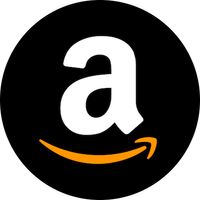
Amazon.com Inc
NASDAQ:AMZN
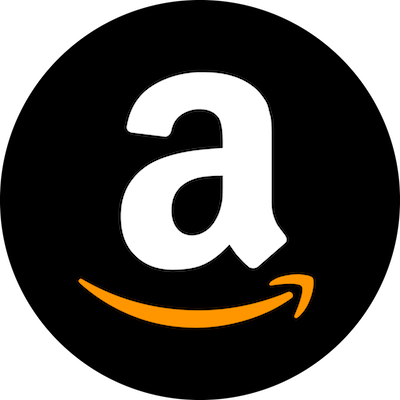
Amazon.com Inc
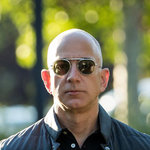
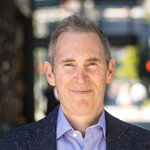


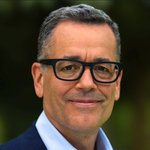
Amazon.com Inc., founded by Jeff Bezos in 1994, began its journey as an unassuming online bookstore in a small garage in Bellevue, Washington. With a vision far ahead of his time, Bezos was keenly aware of the untapped potential of the Internet, and as the web grew, so did Amazon. The company's initial focus on books provided a perfect entry into the digital space, but its model was designed for expansion. As it evolved, Amazon quickly diversified its offerings, venturing into electronics, clothing, groceries, and virtually every consumer product imaginable. By constantly redefining e-commerce, it transformed into a behemoth through strategic investments and innovations in technology and logistics. Key to its success was the seamless user experience it offered, supported by an expansive network of fulfillment centers and sophisticated data algorithms that personalized shopping experiences for millions of customers worldwide.
Beyond its direct retail operations, Amazon ingeniously expanded its economic footprint through Amazon Web Services (AWS), launched in 2006. AWS pioneered the commercialization of cloud computing services, providing scalable and cost-effective infrastructure solutions to businesses ranging from startups to global corporations. Today, AWS stands as a substantial revenue driver for Amazon, frequently contributing a significant portion of the company’s operating income due to its higher margin compared to retail. Furthermore, Amazon's ecosystem is bolstered by its Prime subscription model, which not only incentivizes customer loyalty with perks like free shipping and access to streaming services but also generates a steady flow of predictable income. These diverse revenue streams, supported by relentless innovation and customer-centric focus, underpin Amazon’s status as one of the most influential companies in the global marketplace.
Earnings Calls
In Q3 2024, Kinnevik completed its transformation, concluding the Tele2 divestment while facing a 5% drop in net asset value to SEK 37.4 billion, mainly due to a 7% decline from VillageMD. Core companies like Spring Health and TravelPerk showed resilience, with average revenue growth exceeding 60% and EBITDA advancements expected in 2025. Kinnevik invested SEK 1.3 billion, primarily in Spring Health and Aira. Looking ahead, there's a potential SEK 1 billion deployment in Q4 as Kinnevik aims for ongoing capital allocation to promising ventures.
Management

Jeffrey P. Bezos is the founder and former CEO of Amazon.com, Inc., one of the world's largest and most successful e-commerce companies. Born on January 12, 1964, in Albuquerque, New Mexico, Bezos showed an early interest in how things work, turning his parents' garage into a laboratory and rigging electrical contraptions around his house. Bezos graduated from Princeton University in 1986 with degrees in electrical engineering and computer science. After college, he worked on Wall Street in a variety of related fields, including a role at D. E. Shaw & Co., a hedge fund. In 1994, he left his lucrative job to found Amazon, initially an online bookstore, operating out of a garage in Seattle, Washington. Under Bezos’s leadership, Amazon rapidly expanded beyond books to become a dominant force in online retail. Known for his customer-centric approach and innovative strategies, Bezos diversified the company's offerings into numerous sectors, including digital streaming, cloud computing with Amazon Web Services (AWS), and artificial intelligence with products like Alexa. His commitment to innovation extended to creating physical stores without checkouts and the development of delivery drones. Throughout his tenure, Bezos was known for his focus on long-term growth and reinvestment of profits into the business, which occasionally drew criticism from Wall Street while enabling Amazon to stay at the forefront of technology and retail operations. In addition to his work with Amazon, Bezos founded Blue Origin, a space exploration company, in 2000, with the aim of reducing the cost of space travel and eventual human colonization of space. Blue Origin has successfully launched several suborbital missions and is working on more ambitious projects, such as orbital and lunar missions. In February 2021, Bezos announced that he would step down as CEO of Amazon to focus on other ventures, including Blue Origin and The Washington Post, which he owns. He transitioned to the role of Executive Chairman in July 2021, handing over the CEO position to Andy Jassy. Bezos has been the recipient of numerous awards and honors, reflecting his impact on business and technology, and his influence extends beyond his companies to philanthropy, notably through initiatives like the Bezos Earth Fund, focusing on climate change, and the Bezos Day One Fund, supporting homeless families and education. His leadership style and business acumen have left a lasting imprint on global commerce and technology.

Andrew R. Jassy is the President and Chief Executive Officer (CEO) of Amazon.com Inc., a role he assumed on July 5, 2021, succeeding the company's founder, Jeff Bezos. Jassy has been a pivotal figure in Amazon's corporate history, primarily due to his instrumental role in developing and expanding Amazon Web Services (AWS), the company's highly profitable cloud computing division. Jassy joined Amazon in 1997, right after completing his MBA at Harvard Business School. He was a significant part of the team that initially formulated the idea for AWS, which launched in 2006. Under Jassy's leadership, AWS grew into a multi-billion-dollar business, becoming the world's leading cloud services platform, which considerably contributes to Amazon's overall profitability. Known for his strategic acumen and deep understanding of the technology sector, Jassy has been recognized for fostering innovation and driving business growth. His leadership style is often described as detail-oriented and principled, with a focus on customer-centric solutions. Before becoming CEO, Jassy served as the CEO of AWS from its inception until July 2021. His transition to the role of Amazon's CEO marked a significant shift in the company's leadership, reflecting the growing importance of cloud services within Amazon's broader business strategy. Jassy's tenure as CEO is expected to emphasize continued innovation and expansion across Amazon's diverse portfolio of services.

Brian T. Olsavsky is a prominent executive at Amazon.com Inc., where he has played a crucial role in managing the company's finances. He joined Amazon in 2002 and has held various key positions within the company. Olsavsky became the Chief Financial Officer (CFO) in June 2015, overseeing Amazon's financial operations, including its financial strategy, investor relations, and management of its financial risks. Before becoming CFO, Olsavsky was the Vice President of Finance and CFO for the company’s Global Consumer Business, where he was instrumental in leading the finance functions for Amazon’s worldwide retail and marketplace businesses. His leadership has been pivotal in guiding the company through significant periods of growth and investment in new technologies and services. Prior to joining Amazon, Brian Olsavsky worked at Fisher Scientific, where he held a variety of financial and business management roles. He holds an MBA from Carnegie Mellon University and a Bachelor’s degree from Penn State University. Under his financial stewardship, Amazon has continued to expand its global footprint and diversify its business operations, further cementing its position as a leader in the tech industry.

David A. Zapolsky is a prominent legal executive who serves as the Senior Vice President, General Counsel, and Secretary for Amazon.com, Inc. He joined the company in 1999 and has played a vital role in overseeing Amazon's legal, regulatory, and compliance matters. Zapolsky's responsibilities include managing a global team of attorneys and legal professionals while advising the senior leadership team on a wide range of legal issues affecting the company. Before joining Amazon, Zapolsky was a partner at the law firm Dorsey & Whitney LLP, where he specialized in commercial litigation. He holds a Juris Doctor (J.D.) degree from the University of California, Berkeley, School of Law, and an undergraduate degree from Columbia University. David Zapolsky's extensive experience and leadership skills have been instrumental in navigating Amazon through various legal challenges and regulatory environments as the company has grown into a global e-commerce and technology powerhouse.

Douglas J. Herrington is a prominent executive at Amazon.com Inc., known for his significant contributions to the company's retail operations. Serving as the Chief Executive Officer of Worldwide Amazon Stores, Herrington oversees the company's retail business on a global scale. He joined Amazon in 2005, originally leading the Consumables business and later playing a pivotal role in launching Amazon Fresh. With a deep background in retail and consumables, Herrington has been instrumental in expanding Amazon's grocery and consumer goods sectors. Before his tenure at Amazon, he co-founded webvan, an online delivery service for groceries, and held positions at companies such as Guilbert and The Pillsbury Company. Herrington is recognized for his strategic vision and leadership qualities, steering Amazon's retail operations towards innovation and customer-centric approaches. His expertise and long-standing tenure at Amazon underscore his importance in navigating the complexities of the retail industry as e-commerce continues to evolve.

Shelley L. Reynolds is a prominent figure at Amazon.com Inc., serving as the Vice President of Worldwide Controller. In her role, Reynolds is responsible for overseeing all aspects of Amazon's accounting operations, financial reporting, and internal controls across its global operations. She plays a crucial role in financial oversight and ensuring the accuracy and integrity of the company's financial statements. Reynolds joined Amazon in 2006 and has since been a key part of the finance leadership team. Her vast experience and expertise significantly contribute to Amazon's robust financial management strategies. Prior to joining Amazon, she gained extensive experience at Deloitte & Touche LLP, where she served in various roles, including audit and advisory services, which provided her with a strong foundation in financial practices and operations. Reynolds is known for her commitment to excellence and her ability to lead complex financial projects and teams, ensuring that Amazon maintains its reputation for transparency and accountability in financial reporting. Her leadership is vital in navigating the challenges of Amazon's vast and dynamic marketplace.

Dr. Werner Vogels is a prominent technology executive known for his role as the Chief Technology Officer (CTO) and Vice President at Amazon.com Inc. He joined Amazon in 2004 and has been instrumental in shaping its technology strategy, particularly in the development and adoption of cloud computing through Amazon Web Services (AWS). Dr. Vogels holds a Ph.D. in Computer Science from the Vrije Universiteit Amsterdam in the Netherlands. Before his tenure at Amazon, he was a research scientist at Cornell University, where he focused on scalable and reliable enterprise systems, an area that played a crucial role in his later work at Amazon. As CTO, Dr. Vogels is responsible for driving the company's technological vision and strategy. He is known for his work on Amazon's distributed systems and for being a vocal advocate of cloud computing, which transformed how businesses deploy and manage their IT infrastructure. A respected figure in the tech community, Dr. Vogels often shares insights and innovations through public speaking engagements, his blog "All Things Distributed," and various industry conferences. His work has significantly contributed to Amazon's reputation as a leader in cloud services and technological innovation. Dr. Vogels is recognized for his commitment to customer-centric development, ensuring that Amazon's technology serves the needs of its diverse and global customer base.

Dave Fildes is known for his role at Amazon.com Inc. as the Director of Investor Relations. In this capacity, he serves as a liaison between the company and its shareholders, analysts, and the broader investment community. His role involves communicating Amazon's financial performance, strategic initiatives, and growth plans to investors, which is crucial for maintaining investor confidence and supporting the company's stock performance. Fildes has been with Amazon for several years, and during his tenure, he has contributed to shaping Amazon's communication strategy concerning its financial disclosures and market positioning. His efforts have been central during periods of significant company activity, such as quarterly earnings reports, mergers and acquisitions, and responses to market trends affecting Amazon's operations. His expertise in investor relations plays a vital part in how Amazon's business endeavors are perceived on Wall Street. His role requires a deep understanding of Amazon's complex business model, financial metrics, and strategic direction. By effectively managing investor communications, Fildes helps to ensure that Amazon's market value reflects its business fundamentals and long-term potential.
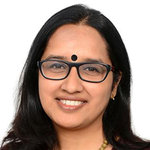
Anuradha Aggarwal is a prominent business leader known for her extensive experience in marketing and brand management. Before joining Amazon.com Inc., she has held significant positions in various multinational companies, contributing to her reputation as a seasoned executive. Anuradha began her career with Hindustan Unilever, where she honed her skills in managing consumer brands. She later served as the Chief Marketing Officer at Marico Limited, an Indian consumer goods company, where she played a crucial role in building and nurturing the brand portfolio. Her journey also includes a pivotal role at Mondelez International (formerly Cadbury), where she was instrumental in driving marketing strategies across diverse markets. With a strong educational background, including studies at prestigious institutions, Anuradha Aggarwal has developed a deep understanding of consumer behavior and digital transformation. At Amazon.com Inc., Anuradha Aggarwal holds a key position, where she leverages her expertise to enhance customer experiences and drive growth initiatives. Her leadership is marked by a focus on innovation, strategic thinking, and a commitment to leveraging data-driven insights to meet business objectives.
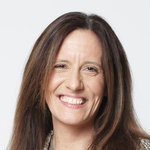
Beth Galetti is a prominent executive at Amazon.com Inc., serving as the Senior Vice President of People Experience and Technology. She is one of the highest-ranking women in the company and plays a crucial role in overseeing Amazon's vast global workforce. Galetti is responsible for managing human resources operations, talent acquisition, and employee development for the company. With a background in engineering and an M.B.A. degree, Galetti brings a strategic and analytical approach to her role. Her leadership style emphasizes innovation in HR practices, data-driven decision-making, and fostering an inclusive workplace culture. Before joining Amazon, she held various leadership positions in the logistics and healthcare sectors, which helped her develop a diverse skill set applicable to her current responsibilities. Galetti's work has had a significant impact on shaping Amazon's approach to workforce management, particularly during periods of rapid expansion and increased scrutiny regarding labor practices. Her efforts focus on enhancing employee experiences, implementing cutting-edge technology solutions, and aligning human resources strategies with Amazon's overall business objectives.

















































 You don't have any saved screeners yet
You don't have any saved screeners yet

Good day, and thank you for standing by. Welcome to the Kinnevik Q3 Report 2024 Webcast and Conference Call. [Operator Instructions] Please be advised that today's conference is being recorded.
I would now like to hand the conference over to your first speaker today, Georgi Ganev, CEO. Please go ahead.
Thank you, and good morning, everyone, and welcome to the presentation of Kinnevik's results for the third quarter 2024. I'm Georgi Ganev, Kinnevik's CEO. And with me today is our CFO, Samuel Sjostrom; and our Director of Corporate Communications, Torun Litzen.
On today's call, we will walk you through the key events during the quarter, including our most recent investment activity. I will also give you an update on our 2 most recent investments in Spring Health and Aira. Samuel will then cover our financial position and the development of our net asset value. Finally, I will show you the agenda for our upcoming Capital Markets Day next week. And as usual, we will end up with a Q&A.
So let's start on Page 4. The third quarter marks the completion of the Kinnevik transformation that we have been driving for the past 6 years. With the last step of the Tele2 transaction concluded, we enter our next phase with a strong financial position and a growth-focused portfolio with a high-performing core and several exciting early-stage companies, with the potential to create significant outcomes.
Over the last quarters, we have seen encouraging development in our core companies, now representing more than half of our portfolio, up from 30% at the end of 2022. However, we have also had several disappointments that have clouded this strong development in our core, and we regret to bring you another downward valuation revision in the non-core part of the portfolio this quarter in VillageMD, a subject that both I and Samuel will come back to.
Our net asset value amounted to SEK 37.4 billion or SEK 132 per share at the end of the quarter. The fair value of our private companies was down by 7% in the quarter, driven primarily by a complete write-down on VillageMD. The weakening dollar also bore significant SEK 0.7 billion negative impact on the NAV. Excluding VillageMD, the underlying valuations were flat on average or written up 4% in our core companies. With SEK 1.3 billion net invested in the quarter, the private portfolio declined in value by SEK 0.5 billion to SEK 25.2 billion.
Looking back at our investment in VillageMD. We first invested in the company in 2019, supporting the founder's vision of building a primary care-led clinical model that produced high-quality care for patients and strong economic value to physicians. In 2021, we made a partial exit of $360 million at 3.2x our total invested capital when Walgreens acquired a majority stake in the company. And during 2024, Walgreens have on several locations stated that they are evaluating options for their VillageMD investment, including a potential divestment or restructuring. This is a process in which we have very little influence. And we, therefore, face significant uncertainty reflected in the lower valuation we ascribed to the company this quarter.
But we have also seen continued strong execution in our core companies, Cityblock, Mews, Pleo, Spring Health and TravelPerk, and they have kept on delivering in 2024. Now representing 52% of our growth portfolio, these companies have grown revenues by more than 60% on average over the last 12 months. They have progressed on their path to profitability and are expected to generate positive EBITDA as a group during 2025. And in this quarter, we invested more capital in Spring Health, which we will go through in more detail soon.
We also see promising developments in our group of selected ventures. These are companies which are still early on the growth journey, but where we expect to continue to invest meaningful capital in the coming years if they meet our expectations and milestones. We are convinced that some of them have the potential to generate outsized returns and emerge as our core companies of the future. We also know that not all of them will be as successful, but as a group, we have high conviction in their ability to create a number of exciting businesses. And in the quarter, we committed an additional EUR 20 million in Aira, which I will touch on further shortly.
Our drug discovery company Recursion deepened its capabilities with the acquisition of Exscientia, a company with a complementary AI platform. We expect the combination to accelerate the discovery of innovative treatments, making the process faster, more cost effective and delivering higher precision in targeting diseases.
Spring Health is now the largest asset in our portfolio, representing close to SEK 5 billion. And let us have a look at why we are so excited about this company, starting at Slide 5. We first invested in Spring Health in September 2021. And since our first investment, a conviction that we had at the time that not only does Spring Health represent an outstanding business opportunity, but also the opportunity to change lives for the better and to have a real-life positive impact has proven right over and over again.
The Founders, April Koh and Adam Chekroud, are executing on the vision that a future of mental healthcare is going to be radically different. Instead of being a game of trial and error, it will be accurately tailored to each individual through data. And with super-focused execution, Spring Health has consistently surpassed expectations on both growth momentum and profitability improvements, growing run rate revenues by more than 15x since our first investment in 2021, with clients, including names such as Microsoft, Target, JPMorgan Chase and Delta Airlines. And since our $100 million secondary acquisition in mid-2023, the company has more than doubled its revenues.
The company is in parallel overperforming by 5 percentage points on EBITDA margins in 2024 to date and expected to make a small single-digit loss margin. With profitability already demonstrated on an occasional monthly basis, the company is expected to be cash flow positive in 2025 with a large and expanding TAM allowing continued high pace growth.
In the quarter, Spring Health raised $100 million funding round, strengthening the company's balance sheet as it prepares to become a public company. We participated in the round with a $35 million investment and acquired an additional $45 million in secondary from co-investors, making us now the company's leading shareholder behind the combined ownership of founders, April and Adam.
The investment in Spring Health is another manifestation of our strategic priority to accelerate the concentration of Kinnevik's portfolio to our core companies. And Spring Founder, Adam Chekroud, will be in Stockholm next week to present at our Capital Markets Day, and I hope many of you will be there to tune in to hear him tell the Spring story in his own words.
Now let's move to Page 6 for an update on our investment in Aira. In the quarter, we invested another EUR 20 million in Aira together with our co-investors, Temasek and Altor. As you will recall, the market for residential heating is a EUR 1 trillion market, accounting for 10% of Europe's carbon emissions. Aira has a bold vision to drive the adoption of clean energy technology by accelerating the electrification of residential heating with intelligent heat pumps at the core. With 5 countries banning fossil fuel heating equipment to date, more than 130 million boilers in Europe need to be replaced with sustainable alternatives.
Aira's business model is built on vertical integration, and it has successfully expanded its operations since our first investment in late 2023. In this short time period, Aira has built a vertically integrated clean energy tech company with commercial operations in Germany, Italy and in the U.K. They also have R&D and product development in Sweden, and a manufacturing facility in Poland. The company is currently run rating annual revenues of EUR 100 million from 0 just 12 months ago.
And in Aira, the feedback loop is faster, and the fundraising model is more reminiscent of traditional venture capital relative to our other long-duration climate tech investments, such as Solugen, Charm and Stegra. And we expect Aira's continued performance to have a positive impact on our NAV already in 2025. And we're also very glad to have Aira's CEO, Martin Lewerth, with us at the Capital Markets Day to share his perspectives on the company and their journey.
That said, I will now hand over to Samuel to talk you through our private portfolio evaluations and our financial position.
Thanks, Georgi, and good morning, everyone. So as usual, I'll start on our financial position and capital allocation and then move my way into NAV and private company valuations.
In Q3, you will have seen we finalized our Tele2 divestment and thereby our transformation to growth that we set out on some 7 years ago. We ended this quarter and this transformation with a SEK 12.2 billion net cash position, providing a long enough runway for us to deliver exits and again prove that our strategy can finance itself beyond the SEK 9.5 billion that we've already released from our growth portfolio during the course of this transformation.
As has been the case for the last quarters, investments were focused on our core companies and on our newer ventures, with minimal deployment elsewhere in the portfolio. This quarter, the largest investments were the 2 that you just heard Georgi talked to, our $80 million investment into Spring and our EUR 20 million investment into Aira. With these investments, we have now deployed SEK 1.8 billion into our focused companies during 2024, representing more than 75% of our total investment year-to-date.
Still, we continue to work through a pipeline of opportunities in our focused companies and see a path to deploying upwards of SEK 1 billion in Q4 through 1 or 2 larger funding rounds and 1 or 2 secondary acquisitions. As we've said in prior quarters, fundraising processes are lengthier and more enjoyable in this environment and secondary acquisitions entail even longer and less predictable processes.
A deployment of SEK 1 billion in Q4 reflects a probability weighted pipeline, and hence, there can be some swings around that number due mainly to processes progressing faster or slower than expected. Meanwhile, we continue to actively assess new investments while exploring options to exit some of our smaller non-core companies and are cautiously optimistic around our ability to show progress in both these areas in the next few quarters.
At our Capital Markets Day next week, we look forward to providing you with more and longer-term details on our capital allocation strategy for the years ahead. But for now, let's move on to Page 9 and this quarter's NAV development. NAV was down 5% in Q3 to SEK 37.4 billion or SEK 132 per share. 3 main factors drove this development. Firstly, our core companies continue to perform and grew in value by 4% on a constant currency basis despite facing 3% multiple contraction.
Secondly, the dollar weakened against the Swedish krona by more than 4%, with currencies overall bearing a negative SEK 0.7 billion impact on NAV. But thirdly and most materially, we've chosen to write down our underlying valuation of VillageMD to a level where there is no residual value to equity holders after debt owed to controlling shareholder at Walgreens has been satisfied. This stems from Walgreens' statements during the quarter that it is evaluating options for its investment in VillageMD, including a divestment or restructuring of the company.
Walgreens has also stated that it and VillageMD has acknowledged the existence of defaults under its intragroup loan agreements and that they have agreed that Walgreens will not seek more immediate remedies. The increased uncertainty surrounding the situation and the limited influence and information that our small minority shareholding affords, this is what causes us to take the conservative, but drastic action to write down our investment to 0 at this juncture.
Now this is a good case study of the perils of having a controlling strategic investor in your cap table, and we've learned a lot. But with that said, we are extremely disappointed by the development since Walgreens acquired control of this business, even though that acquisition of control entailed us locking in a 3x return on our investment.
We are assessing our options to salvage value and to potentially support VillageMD in a future where Walgreens is no longer in control of the company. But while working on remedying this situation, we are for now front-loading downside risk to NAV and writing down our stake to 0. This ensures that a solution to the current situation is not only positive for the company and for us minority shareholders, but also for future NAV development.
Moving on. All in all, the private portfolio was down 7% in SEK terms to SEK 25.2 billion, of which SEK 13.5 billion sits in our 5 core companies where we saw underlying value growth of 4% in the quarter. And all these core companies have been priced by other investors during 2024, most recently Spring in this quarter at a premium to our Q2 NAV.
Looking at the full private portfolio, we've seen price transactions in 79% of our private companies by value since the start of '23 at valuation levels that on average have been 1% above our preceding quarterly NAV. Unpacking that number into primary transactions, meaning funding rounds and secondary transactions, meaning acquisitions from co-shareholders, secondary transactions have on average occurred at a 30% discount to NAV. And primary transactions have on average been concluded at a 20% premium.
These price levels that other investors are transacting at in our companies resonates not only with what are normal secondary discount levels in healthy businesses in the current liquid state of private markets, it also validates that the valuation levels in our NAV service attractive entry points for new co-investors coming into our private companies. This provides a degree of comfort that we're doing an okay job marking our portfolio to market.
However, during 2023 and '24, we've had significant negative valuation developments in a handful of non-core companies that have obscured the, otherwise, resilient performance of our portfolio. The most recent example is clearly VillageMD. And earlier, we have lost significant NAV on investments mainly in e-commerce companies like Oda/Mathem and Instabee.
The fact that we're taking down our valuation of VillageMD so significantly this quarter and our overall valuation levels of our non-core companies in Q3 is drawing on lessons learned from these situations. These significant write-downs naturally cause our noncore companies' percentage share of our portfolio to come down. And this, together with improvements in the level of stability and predictability in many of these noncore companies, we believe has reduced valuation risk meaningfully in that part of the portfolio. And this should help ensure that the strong performance in our core companies becomes more visible and more impactful in the development of our full NAV going forward.
On the next couple of pages, I'll give you some color on the valuations in the private portfolio. But as usual, you can find much of what I'll be going through and more in Note 4 in today's report. And I'll try to be as helpful as I can when we get to Q&A. Starting off with a very quick snapshot of the known external drivers, currencies and multiples on Page 10. As I mentioned upfront, the U.S. dollar depreciated by 4.3% in Q3, impacting 62% of our private portfolio and in turn causing our valuated currency basket to be down 3%. This corresponds to the negative SEK 0.7 billion effect on our private valuations in the quarter.
Trading in the key peer sets of our private portfolio was a lot more stable than last quarter, as outlined on the left-hand side of this page. On average, value-weighted peer multiples were up 5% in Q3. In particular, we saw positive movements in the average levels of our healthcare peer sets although with significant dispersion in trading within these groups. And we also saw stability in software after last quarter's significant derating. But this you all know. so let's jump on to the next page, Page 11, where we are again charting how our valuations in our largest areas, software and virtual care stack up against these public benchmarks.
So what we're showing with this chart again is that we are valuing our industries more or less in line with the average multiples of public software and healthcare technology businesses despite our companies growing significantly faster while reaching or approaching cash flow profitability. In this chart, expected gross profit growth over the coming 12 months is plotted against the x-axis. And on the y-axis, we're charting forward gross profit multiples.
And gross profit multiples are, we believe, a good starting point in comparing the valuations of our businesses to those available to public investors as gross margins are typically indicative of future bottom line profit margin levels. Our software and healthcare technology businesses are still loss-making as a group with cash flow loss margins of around 7% to 10% over the next 12 months and around minus 4% to 5% on average in 2025. That spans profitable businesses like Cedar and Spring to very early-stage companies like Pelago, which is growing at a much more violent pace and allowing themselves to invest heavily in building their product and go-to-market and thereby generating large percentage loss margins in the short term.
On this chart, we've plotted out the public comps as well as our industry averages within software and virtual care. And as you can see, public company valuations remain fairly tightly dispersed along the black trend line as growth remains the most important determinant for public investors valuing healthy and well-financed businesses in these sectors.
As we've touched on in the past, the financial profiles of companies in this part of our public peer universe have changed meaningfully coming out of the pandemic to a point where today, there is virtually not a single public stock available in these sectors if you're interested in a company growing by more than 30% year-over-year.
Meanwhile, our software and virtual care companies are growing gross profit and revenues by around 50% to 55% on average, but are valued as a group at a multiple in line with the average gross profit multiples of similar public companies growing by around 20%. And as we've stated several times in the past, there is no rush to push our companies towards the left-hand side of this chart. Growth compounds over time, and slowing down too fast can bear significant ramifications on longer-term potential.
Now the reason why we're still valuing our companies at a discount to what is suggested by the value that public markets ascribe to growth is because we take into consideration several parameters beyond growth in gross margins. Obviously, and first and foremost, profitability, but also scale, addressable market and share of recurring revenues relative to more transaction or usage-based income. As we continue to take initiatives to improve disclosure and transparency around our private companies, we plan to provide another valuation deep dive presentation in the near future, similar to what we did in 2022 to provide you all with more details on our valuations and our processes and methods that underpin them.
But for now, let's move on to another one of our staple pages that covers how our core companies have managed their growth-profitability balancing act on Page 12. Looking back on our core company's development since end of 2021, they have matured, that they've managed and are continuing to manage to trading growth for improved margins in an efficient way. On this chart, which you have seen a couple of times before, we plot our core company's average year-over-year growth rate on the y-axis and their weighted average EBITDA margin on the x-axis. The first red marker in the top left is the average financial profile of these companies in Q4 '21, and then each red dot represents a subsequent quarter up to today's Q3 '24 outlook.
So from being expected to grow by more than 150% with 70% EBITDA loss margins on average at the end of '21, throughout this journey coming out of the pandemic, they've balanced the growth-profitability trade-off well and are now expected to grow revenues by 40% to 45% over the next 12 months with EBITDA margins of minus 5% on average. Each individual core company is grouped around that average with growth rates spanning mid-30s to 70s percentages and EBITDA spanning loss margins in the high-teens to positive mid-single-digit margins.
Looking into 2025, we continue to see this group of core companies growing by more than 40% and transitioning into EBITDA profitability, which effectively for these typically asset-light companies means reaching cash flow profitability as well. Now once that breakeven inflection point has been reached and proved to be sustainable, we believe and we will work towards supporting growth rates stabilizing at above 30% levels that can compound year-over-year at profitability, meaning that the slope of this red curve should begin to flatten for this group, and in particular, for a select few.
With that, I'd like to move on to the quarterly valuation changes, starting with these 5 core companies. And again, you'll find more elaborations on our valuation assessments in Note 4 of today's report. On average, underlying constant currency valuations of our core companies were up by 4% in the quarter. Quickly going through each of them, Cityblock and Mews were largely flat in the quarter, while Pleo was down 6% on an underlying basis due to multiple contractions that now places our valuation level of Pleo to being in line with the average revenue and gross profit multiples of its public software peer set. This multiple contraction and the valuation of Pleo was also impacted slightly negatively by us making some conservative cuts in our forward projections in light of the market-wide slowdown in growth amongst public software companies.
At Spring, we raised our valuation in Q3 to a level largely in line with that of the funding round announced this quarter, a transaction that corroborated our approach of valuing Spring at multiples somewhere in between software and healthcare technology, reflecting the company's revenue mix.
And at TravelPerk, we raised our underlying valuation by 11%, stemming from the company continuing to overperform on our expectations. Year-to-date, TravelPerk has beat our gross profit expectations by more than 10% and have beat EBITDA margin expectations by more than 5 percentage points. This overperformance is what drives this quarter's write-up while the company remains valued at an unchanged 25% discount to its public software benchmarks.
These 5 core companies represented more than half of our portfolio at the end of Q3. And if they continue to deliver results close to our expectations, they will continue to grow their share of our portfolio value even before taking further capital reallocation into account, and we will see solid value accretion from this group in a flat market.
Moving on to Page 14. Having covered off our core companies, the largest remaining valuation change this quarter is again VillageMD. As I said in the beginning of my remarks, we've written down VillageMD to a level where there is no residual value to equity holders. That does not mean that we ascribe VillageMD's 0 enterprise value, nor does it mean that we're no longer shareholders in this business. What it does mean is that the statements from Walgreens around them evaluating options for its VillageMD investment, including selling or restructuring the company, coupled with their statements that VillageMD is in forborne default on parent company debt causes significant uncertainty for us as a small and noninfluential minority shareholder after our partial exit in late '21.
So what we're doing is that we're focusing on what we can control, and that is removing all VillageMD valuation risk in our NAV until the outcome is certain by writing our stake down to 0. And it is by assessing our options to salvage value and to potentially participate in staking out a path for the business where Walgreens and their strategic priorities no longer dictate the future of VillageMD.
We should have a more definitive answer on the future of this business by end of this year. But at this point in time, it is unfortunately hard for us to provide more nuances. When excluding the write-down on VillageMD, we saw underlying changes in valuations of our private companies that were largely flat on average, leading to a value decline pretty much on equal step with the aforementioned currency headwind.
So to conclude, Q3 was another quarter of strong performance in our core companies, solidifying our trust and then becoming a positive undercurrent to NAV as we end 2024 and enter '25. We see stabilization in our noncore assets with limited funding needs and less valuation risk after significant write-downs of VillageMD and other noncore companies during 2024. And this combined makes us feel optimistic around the NAV outlook as well as on our ability to ensure that capital allocation continues to be dedicated towards our high-return opportunities in our focused companies.
With that, I'd like to hand it back to Georgi for his concluding remarks.
Thank you, Samuel. Let's now move to Page 16, the final page of the presentation. As I mentioned, we will host our Capital Markets Day on the 23rd of October in Stockholm and online. And during the day, we will share where Kinnevik is today and what the future holds in store when it comes to our competitive edge, the opportunities we see in the portfolio and how we intend to invest our capital going forward.
We also want you to meet our senior investment professionals and our portfolio companies to familiarize you even more both with the Kinnevik team, who are sourcing, investing and driving value in our portfolio, as well as the leaders of the companies that have grown to be the backbone of Kinnevik. And if you would like to register, you will find more information on the Kinnevik website. I look very much forward to meeting you there.
We're now ready to answer your questions. So operator, please open up for Q&A.
[Operator Instructions] And your first question comes from the line of David Johansson from Nordea Markets.
I want to focus on VillageMD a bit. I think one would be your comments around the credit facility to Walgreens. I think, obviously, you must have been aware that Village didn't have enough liquidity to meet the debt payments for the last number of quarters, I think. And as you said, also Walgreens, they have been pretty clear for some time now that they're looking at a variety of options to monetize its assets. I guess my question is what has changed this quarter and why do this now?
And then my second question would be, how do you think about this asset going forward? You say you're looking at a different -- kind of more options to protect value from here. So my question would be if you're able to elaborate a bit more on that.
David, it's Samuel. So on your first question, yes, I mean, clearly, bringing it back to late '21 and then also sort of Walgreens tenure as a controlling shareholder, looking back, they made this very large acquisition of Summit. They financed a large part of it with debt, and that acquisition clearly didn't work out. And so this has destroyed value over time to a point where now also with Walgreens' apparent strategic urgency to refocus on their retail footprint, we feel that this incremental step means that there is substantial risk of Walgreens trying to solve for a transaction where effectively all capital that's being released goes to satisfy Walgreens' debt.
So I'd say it's the incremental urgency, and there's clearly also some information flow to us on negotiations between the important parties in this situation that gives us an increased sense that our value here is at considerable risk.
Yes. And if I may add, we say that we have very little influence of the process. That doesn't mean that we have 0 insight in the process. So of course, we have been very close to the company, VMD in this case, for -- I mean, to understand the various options. And we are still hopeful that there will be an option where VillageMD can have a future on its own without having a controlling shareholder as Walgreens. But again, with very little influence, and this being more of a kind of an urgent situation for Walgreens, we are front-loading the risk in the NAV.
Yes. Understood. And then to follow up on that, I think you've said earlier that Cigna could be one of the parties looking to increase their share in the VillageMD. So do you have an update on that process?
Nothing that we can share publicly since it's very fluid, but you're absolutely spot on, David. There are many potential options here. I mean, of course, the founders are super-dedicated to the business, and we know them because Tim and the team were the ones we were backing back in 2019, right? So they are instrumental in this potential new future for the company. Cigna is another long-term owner that have shown interest. But exactly where the process stands today, we can't disclose.
Got it. And then I also wanted to quickly ask a question on Mathem and Oda. Georgi, when we spoke on the last call this summer, you sounded pretty clear that the company was now on the right track with your latest investment, so a bit surprising to see a restructuring so soon, I think, after. And obviously, you're running this company down again now. So what's the process with Mathem now? And can you finally let this go now? Or are there more investments coming from your end?
I think it's a very relevant question, David. And I think at the time when we were backing Oda and Mathem in this merger together with the other shareholders on the cap table, we did not know about the reconstruction in Mathem. However, that said, all the investors did send the clear signal to Oda Group that they had to take the needed actions to make the company profitable. And I think with the new management in place, we are still very certain that the plants that have presented are solid. And we see, again, the kind of the upside potential in efficiency by using the Oda software and hardware.
That said, management did propose to the Board that a reconstruction was necessary in Mathem to basically cut further costs and to have more of a reset for the operations to be profitable. So we are supportive of this action via our representative in the Board. And how the future will look like, it's very difficult for me to speculate. But again, what we have said is that we are not interested to back this company unless they show profitability.
And your next question comes from the line of Linus Sigurdson from DNB Markets.
So a few more questions on VillageMD, if I may. So -- I mean I guess essentially, the issue here is driven by the fact that you're not really in the driver seat in that investment. But if you look elsewhere in the portfolio, I mean, do you feel confident that you're in the driver's seat there? And I mean to add to that, this was kind of an investment that you earlier listed as a successful example of the new strategy, and now, it's essentially down to 0. How can investors be confident that it's going to be different this time around with your current core holdings?
Thank you, Linus, for the question. I think a very important difference between VillageMD and all other companies on our portfolio is that VillageMD has a controlling shareholder in Walgreens. And it's very clear that we are not aligned when it comes to the future of VillageMD. And being in the driver's seat or actually being in the back of the bus since our divestment in 2021, we have just seen this ride happening with, firstly, the acquisition of Summit leveraging the company quite a lot and then missing the plans when it comes to synergies and topline. And this has pushed the profitability of VillageMD out in time with this dependency on Walgreens.
That is coupled with issues that Walgreens are having on their own, that's easy to understand when you're reading their reports, right? So they are taking drastic actions to provide clarity in their own equity story. And here, basically, VillageMD, I would say, be very frank, it's a company that is squeezed in this transformation on their behalf.
Looking at our other companies in the private world, of course, we -- our ownership span from a few percentage points up to being the largest shareholder next to the combined founders of Spring, for instance. But then you have shareholder agreements, we have rights that actually makes us comfortable. And more importantly, we have other co-investors on the cap table that we're aligned with.
And with a strong cash position, as you know, we've also been able to concentrate the cap table in companies like Spring Health to provide further alignment between the larger remaining shareholders and the founders. That's a way for us actually to make sure that our interests are 100% aligned with the founders, and that is to create strong value over time. So I feel a lot more comfortable in our other assets generally and especially, I would say, in the core assets.
On the question on whether Village is a successful investment, I think it depends on your perspective, right? We did a 3x realized return in 2 years. So by call it financial standards, then clearly, yes, it is a successful investment. However, is this a fairytale ending? Clearly not. But in financial terms, 3x in 2 years is, by our definition, a successful investment.
But if I may add also something that you alluded to, what is the implications on the strategy based on this? It's easy to say that the complexity in value-based care has, to some extent, been underestimated by the market. So just a couple of years ago, these assets were trading at very high multiples. And obviously, that has changed. We still think it's part of the future of U.S. healthcare, and we're quite confident that these businesses can operate profitably. But I think the situation with VMD, again, has been extreme.
Okay. I appreciate that answer. And then just quickly on Pleo, if I may, it's tracking above expectations on profitability improvements, but you lower expectations for FY '25. You've shifted communication around profitability further into '25. Could you just help us understand how you think about that?
Sure, Linus. It's pretty simple, and it's again, drawing on lessons learned in the past where we have seen the slowdown in public software companies. We're not seeing it coming through in Pleo's monthly reports, but we just feel we don't want to get surprised here. So we'd rather sort of bring that forward, take down our expectations now on both revenue and profitability, and then increase the chances for the company to meet or hit or exceed those expectations. So it's just the small incremental measure this quarter to sort of readjust as we head into 2025.
We will now take the next question, and the question comes from the line of Andreas Joelsson from Carnegie.
Just a couple of clarification questions from my side. If we start with the core holdings, I think you state that they have SEK 8 billion in cash in total and only SEK 2 billion sort of burn rate until they are cash flow positive. So I also understand that you would use your own net cash position for fundraising in these companies, secondary transactions or new investments. But why would there be a need for additional fundraisings within -- especially within the core companies? That's my first question.
And then the second one, I think, Samuel, you stated and maybe I didn't get this right, but the secondary transaction usually is implying a 30% discount to NAV and fundraising 20% premium. If that was correct, when you do a secondary, does that discount be reflected in the NAV just as the premiums usually are reflected in the NAV in fundraising?
Okay. I can start with the first one. That's correct. We want to provide you with that figure for you to understand that there is a buffer in these businesses to actually become breakeven, and we think that is important, an important message. However, we've also said that we are super-excited about these companies, and therefore, opportunistically, we're actually looking for secondary transactions. And that is also, as I said, sometimes to concentrate the cap table and align better on the company's long-term future.
When it comes to primary capital, there are many reasons for the companies to consider that. One could be a more aggressive footprint expansion, could be a transformational M&A or just have to have a larger buffer preparing the company to go public. So we will, of course, always choose primary capital before secondary capital if it can add more value to the company's growth. But that's the main reason for the core holdings being interested in potentially raising.
Great. And Andreas, on the question around how we deal with valuation subscribed to our businesses in secondary and primary transactions, you're absolutely right that the average discount in secondary deals has been 30% to our most preceding NAV, and primary rounds have happened at a 20% premium. To what extent we just sort of, call it, plugged those valuations into our models? It's not that simple, and it depends. The secondary transaction we had in Cityblock earlier this year was something that led us to take down our valuation a notch because we felt that, that sort of gap to where that transaction cleared was a bit too high.
On the flip side of that, we have had several valuations that companies have been ascribed in funding rounds where we have valued the enterprise value of the business at a discount to that headline valuation. And that can depend on a variety of things. It could be that it's a wholly internal round. There could be preferential terms of different sorts. So it's quite complex, I should say, but it's not as easy as wherever a deal happens, we just ascribe that valuation to a business.
And then -- and I don't want to sort of complicate things too much and bore you, but there's also clearly different share classes in each of these companies. So when you buy a share of common stock, you might pay a different price than if you buy a share of preferred stock. And that's also something that we clearly reflect in the valuations of our aggregate investments in any given company. I hope that answers your question, but clearly, this is one of those things that we should cover at the upcoming valuations deep-dive session.
We will now take the next question, and the question comes from the line of Derek Laliberte from ABG Sundal Collier.
A couple of questions outstanding. I wanted to ask on the Recursion here on the major acquisition recently made. You sounded pretty bullish about that, but clearly, it hasn't been well received by the market. So why aren't you buying more shares in the stock?
Derek, Georgi here. Yes, I sounded hopefully excited about their transaction. And then you should hear Ala in our team who has a PhD in bio, she's even more excited. And the reason we're excited is that we see that these companies actually together becomes the undisputed leader in this space when it comes to backing up platform company. So it kind of combines the biology with a chemistry in a very fundamental way to actually improve drug discovery as I laid out.
The reason why the market is not appreciating that, we believe, is that the market is not paying any premium or any value to the platform concept today. It's more kind of traditional biotech type of investors looking at the candidates in the pipeline. And although that pipeline has extended, we still are too early to say which of these candidates actually can be turned into real drugs. And that is basically what the market is debating about. So you value these companies in a very traditional way. We have backed Recursion because we are super excited about, again, their platform capabilities that can fundamentally change the way drug discovery works. And that is very similar to how we see the potential in Enveda.
To the question whether we are up for buying, yes, for sure. I mean I think what we have said is that the core companies, we would very likely invest in if we see that opportunity, both in primary or secondary. The other select number of ventures, which is a group where Recursion belong to, that is where we also would like to buy more into these businesses when we see milestones being delivered. The difference now with Recursion and Exscientia is that they have a very strong cash position after that merger. So we would then, as you say, have to buy over the market. And that's something we would consider.
Okay. And on Spring Health relating to this additional secondary acquisition of shares. Could you say something about from who you acquired these shares? Was it from the founders or other co-investors? And also to clarify, was that -- this transaction made up at the same valuation as the funding round?
Derek, it's Samuel. We can't tell you who exactly it was, but it was not the founders. It was a co-investor who came in earlier than us. On the second question, on the pricing of the secondary, I can't give you an exact number, but it was a tighter discount than the average number, I just referenced from speaking to Andreas, but pretty close to that average number relative to the funding round valuation. So even a bit tighter if you compare it to our Q2 mark.
Okay. Okay. And you made this other investment in Oda as part of your commitment in relation to the merger. I mean you probably mentioned this somewhere about this definitely, your sort of final part of the commitment that you had.
Yes, Derek, that was the case or that is the case. So basically, as I said, when we and the other leading shareholders backed the merger and effectively a new management team and their plans, we had this commitment, but there is no further commitments onwards. And that's why we were also very clear, as an investor group, that we wanted to see the company taking all necessary actions to become profitable.
All right. And finally, on Pleo, you already talked about this somewhat, but I'm still struggling a bit to understand here with the company noting or tracking above expectations on profitability, et cetera. But I mean, is this purely cautiousness relating to this broader-related market, so to speak? Or are there any other details in this making you sort of takedown operational expectations?
No. I mean I can echo what Samuel says, it's a cautious measurement here. And again, we feel that we always have very high expectations on growth for these companies, also shown in Samuel's slides, right? But when we also see some headwinds for software -- similar software companies in the market, we are rather kind of adjusting these future expectations on our end, I should say, so we feel more comfortable.
We will now go to the next question, and your question comes from the line of Bharath Nagaraj from Cantor Fitzgerald.
Could you speak a bit about the differentiation of the business model for Spring Health versus peers, like who are the peers really here? And how does that kind of feed in to your future expectations for the growth rates and the margins for this business?
Sorry, I didn't get the other companies, Spring Health and...
Sorry, no, I'm just speaking about Spring Health versus peers, who are the peers here in the market and how do you differentiate this part?
Yes. Sorry. No, basically, I can just do it on kind of overarching level, and then, see if Samuel had something more to add. First of all, I mean, I think, as we've said many times, this company has an impressive track record. When we backed it in 2021, it was a small player. Now it's a significant player in the market. Unfortunately, we cannot disclose the size of it. But again, one of the founders, Adam, will be on our Capital Markets Day next week. So maybe you should ask the same question to him. But I think what we see here is that the company is growing very, very fast successfully and is being able to provide very clear proof points to its customer that they can reduce the cost of healthcare spend, implementing Spring Health solutions.
And that also means that they can have a SaaS-like type of margins. We're not disclosing the range either, but it's clearly lower than some of our other software businesses since you also have healthcare providers, therapists on the balance sheet and external providers. So it's a combination of a digital tool, license fee, usage fee, but also, of course, that they provide real therapists that pushes down their margin slightly, but it's a very healthy margin profile growing at hyper speed. The TAM is also expanding as Spring is moving into adjacent type of services in this space. I don't know if you have anything else to disclose, Samuel.
I mean, Bharath, good to have on. Maybe I'm sort of partial here, but when I hear the word peers, I immediately think of valuations. And as it relates to triangulating the public market peer set in valuing Spring, Spring is sort of reminiscent of software companies that we own and love, like a TravelPerk, for instance, where you have a portion of revenues that is a subscription revenue, and then, you have a portion of revenue that is usage-based. And that's a financial profile that we're fairly used to sort of triangulating peer sets for.
The difference with Spring relative to, for instance, a TravelPerk is that we note that in public markets, if you have 2 virtually identical companies from a financial profile perspective, if one is in healthcare and one is in enterprise SaaS, then the healthcare company is going to trade at a 30% lower valuation multiple. And that's again where I think this round this quarter corroborates our view that Spring should probably be somewhere in between software and healthcare tech. I'm not sure if that was helpful, but there you go.
That's super useful. That makes sense. Just a quick small clarification. In terms of the growing concentration in your core growth portfolio, as you have said, it's 52% right now as a percentage of the total portfolio, what kind of level do you expect it to get to in the future in terms of concentration? And how many kind of core growth companies do you think you'll have? I know you have like a few now, but is that like number expected to increase? Or are you largely like decided on the core growth portfolio for now?
I mean I think it depends how successful they are. We wouldn't be surprised if they start climbing up to 80%, given the potential we see in these assets. But that has also to do with 2 important factors, how many great companies can we find in our focus sectors given what we have built up so far and some of the more emerging ventures? They have this kind of opportunities to create outsized returns, as I said earlier today. And of course, that can also shift that balance, but we wouldn't be surprised if you were climbing more towards kind of an 80-20 over time given the potential we see in companies like Spring or Mews and TravelPerk.
Your next question comes from the line of Fredrik Andersson from HandelsWatch.
I also have some questions about Oda and Mathem. How would you say that things are going for Oda/Mathem at the moment? And what do you think about the future of the company?
So again, as we said, we did back the merger and the new management team that's in place. And it's not a complete new management team, the former COO of Oda is currently implementing Oda's technology and software in Mathem based on the successful outcome we've seen in Norway. I think going back a little bit and speak about our thesis when we first invested in Oda and Mathem, we are happy to again say that we believe in that thesis that more people will actually over time buy food online. Clearly, that was exacerbated in a kind of -- in a way that was not sustainable during the pandemic. But during the pandemic, Oda had its efficient system in place. And therefore, we saw that you can actually make money on a cash flow basis.
Mathem, on the other hand, had to grow during the pandemic or chose to grow during the pandemic with an insufficient system, which meant that we were burning a lot of cash. So that was the problem for Mathem. Oda's problem, on the other hand, was that based on that success and the funding environment in '21, they had very aggressive plans to move into Germany and rest of Europe. That clearly did not happen when the market hit that reset in 2022 and investors were less excited to back these type of business models, and they had to pull back.
So we have 2 different reasons for the challenge we're in now. One is that a too aggressive plan based on the climate we saw in 2021 and the numbers during the pandemic and a Mathem that burned too much cash before they can actually increase their efficiency. These 2 assets combined with the new team, laser-focused to actually make Norway and Sweden profitable, is something we actually are quite excited about. That said, had this been a great investment for us? Clearly not.
That said, do we have the appetite to deploy further capital in this business? Absolutely no. Therefore, we have been super clear that the company needs to come to profitability. Then, of course, at that juncture, we have, again, to reevaluate what is the next phase for Oda Group, what's the interest from strategics, what's the merits for actually having this as a stand-alone company, expanding new countries, et cetera. But I think it's far too early to talk about these things before Oda Group has proven that they can actually deliver positive -- that they can actually reach breakeven.
I think I heard before also that you said, Georgi, that Kinnevik didn't know about the reconstruction of Mathem. Is that right? And what does the reconstruction of Mathem mean for Oda, if you could say something about that as well?
Yes, that's correct. We didn't know about that at the time we were backing the merger between these 2 companies. That hadn't even been discussed. So what happened thereafter is that when the new team came in and the new CEO, Chris, he looked at all alternatives. And of course, looking at the debt that Mathem had and all the challenges actually that had been compounded during the pandemic years, the decision was actually to file for reconstruction in order to make that a sustainable business going forward.
And for parties related to Mathem to receive some, actually, cash back instead of basically seeing a bankruptcy happening, right, and to cutting -- to moving out directly from Sweden. So that was what Chris and the team proposed to the Board of Oda. And at that point, we were actually backing that together with the other shareholders.
And also in September, one of the founders of Oda, Fredrik Gulowsen, he said that investors, including generic have created a crisis at Oda and that they are on the verge of destroying Oda. What are your thoughts about this?
Yes. I mean I can't comment specific tweets or posts. But I can say like this, if Oda had the ability to survive without its backing investors today on the cap table, they would have done so, but that was not the case. They too aggressively launched operations all over the place and were burning too much cash. Could Norway be a profitable market for Oda? Clearly, yes. But that was not the case at the time being. So I think the investors have not only provided capital, but being very clear that the company needs to go back to its core to provide profitability and from there on, build on.
Thank you. That concludes the Q&A for today. I will now hand the call back to Georgi for closing remarks.
Good. Thank you very much for listening and for your questions. And as a last reminder, we will report our results for the fourth quarter and full year 2024 on the 4th of February 2025. But before that, don't miss our Capital Markets Day next week in Stockholm and online. Thank you. Bye.
This concludes today's conference call. Thank you for participating. You may now disconnect.